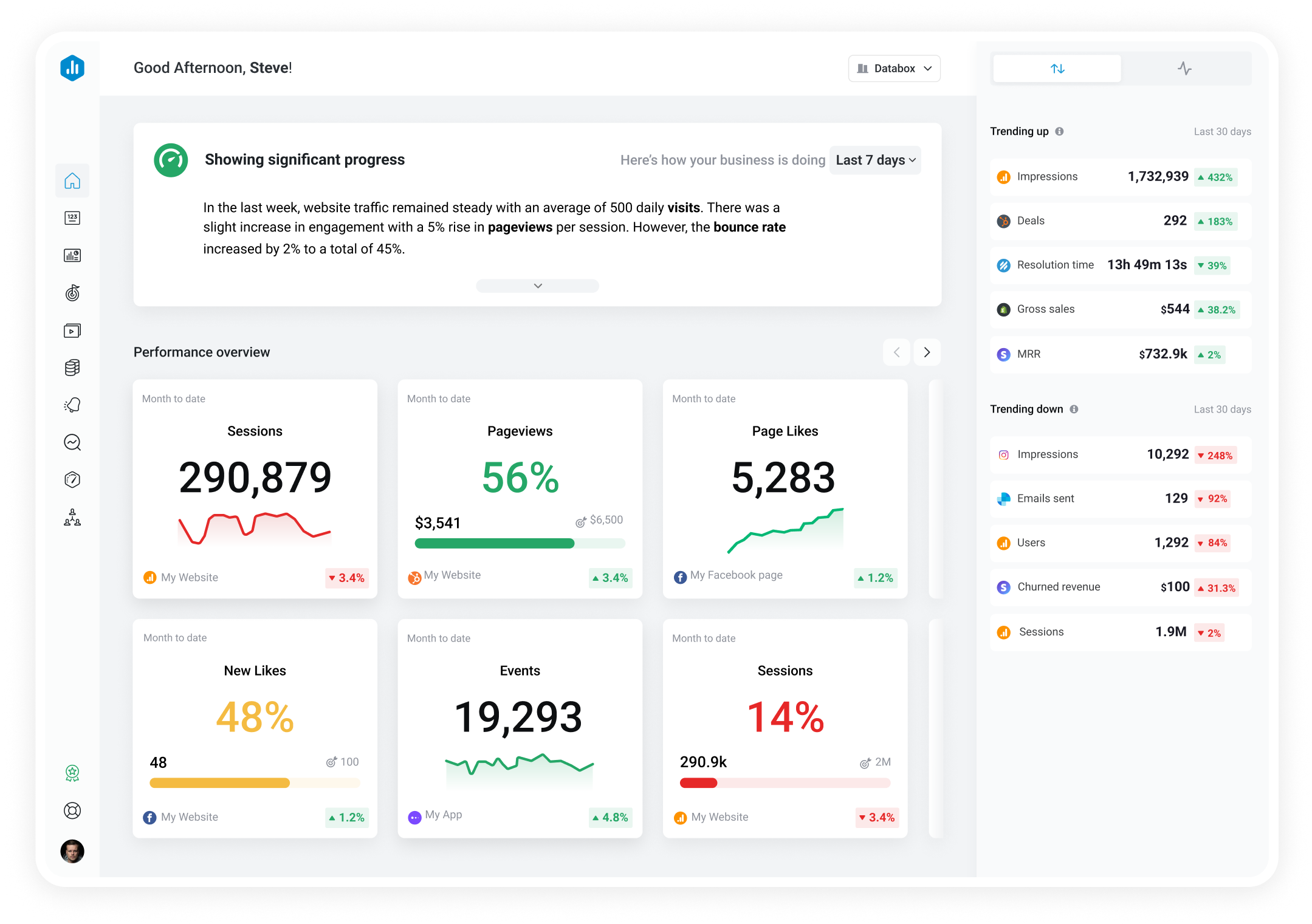Track all of your key business metrics from one screen
GET STARTED
 Eventbrite
Event Capacity
Eventbrite
Event Capacity Event capacity is a metric that indicates the maximum number of attendees an event can accommodate. It helps organizers plan for logistics and ensures compliance with safety regulations.
With Databox you can track all your metrics from various data sources in one place.

Used to show a simple Metric or to draw attention to one key number.
Databox is a business analytics software that allows you to track and visualize your most important metrics from any data source in one centralized platform.
To track Event Capacity using Databox, follow these steps:
 Goals
Goals Scorecards
Scorecards Metric Digest
Metric Digest Metric Builder
Metric Builder Data Calculations
Data Calculations Performance Screen
Performance ScreenThis dashboard allows you to track all the common KPIs of events from Eventbrite.

